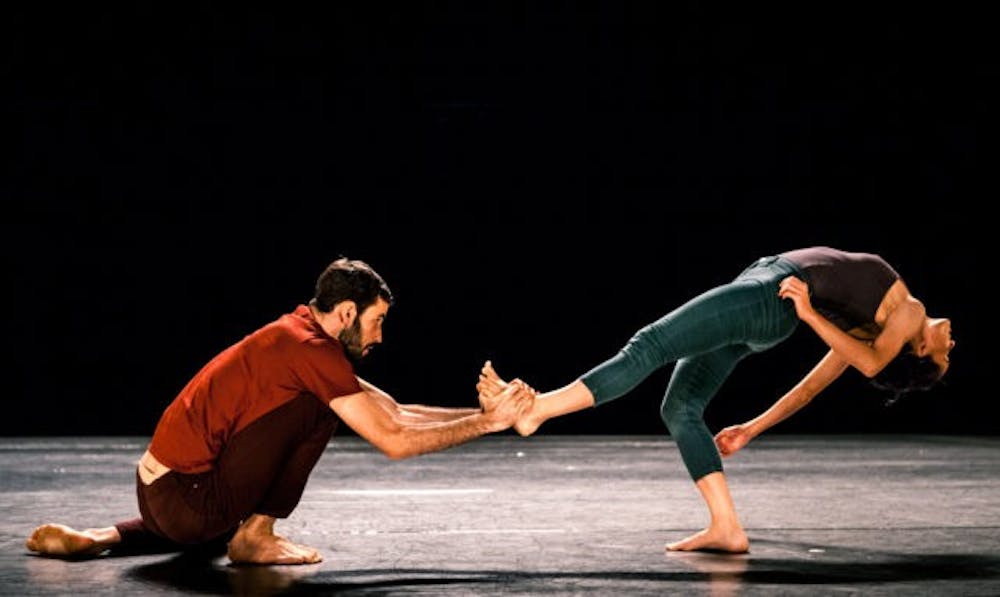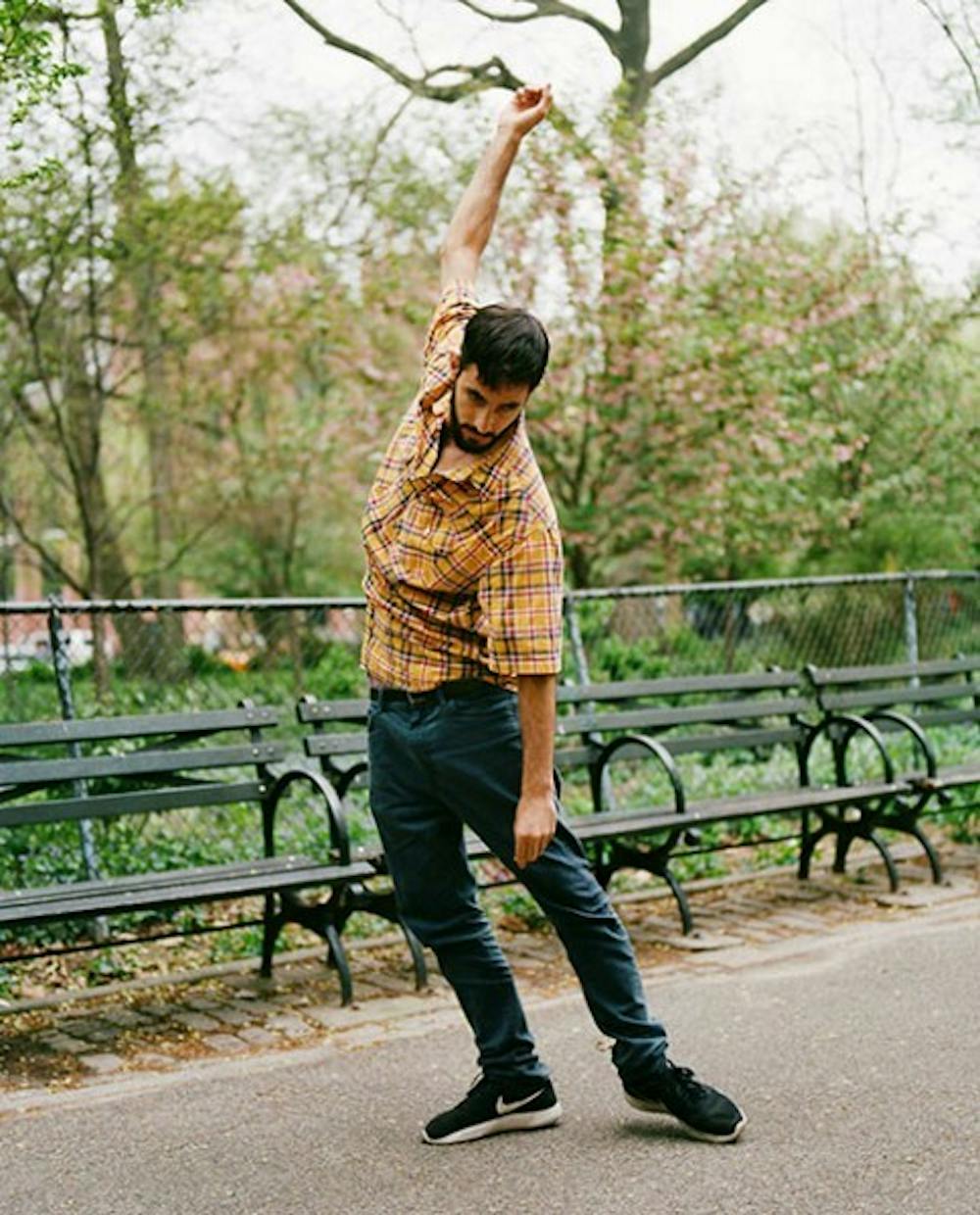“Omri is certainly one of the most charismatic visiting artists that we’ve brought,” said Marge Goldwater, Program Director of the Schusterman Visiting Israeli Artist Program. “I’m thrilled that he is here. He is multidimensional — he is interested in filmmaking [too]. He’s always been very popular with the students and brings tremendous enthusiasm.”
Currently a faculty member of the University’s dance department through the Schusterman Visiting Israeli Artist Program, Omri Drumlevich, 25, specializes in teaching the Gaga movement language, a branch of contemporary dance. The program arranges the residency of Israeli artists — including filmmakers, choreographers, musicians, and authors — at colleges across the United States, where the artists spend a semester teaching and presenting their work to local communities.
Goldwater explained that it is important to highlight Israeli culture, because although people read about the Israeli conflict, they typically are not as familiar with the “incredible culture scene.” She hopes that the artists and professors show a facet of modern Israel by teaching courses and maintaining an active presence on campus and the community. Unlike one-time cultural events, this particular program allows for students to develop a more extended, intimate relationship with the professor and immerse themselves in a deep exposure to Israeli culture.
Prior to his residency at the University, Drumlevich toured with the Batsheva Dance Company from 2010 to 2017 and performed at venues such as the Palais Garnier opera house in Paris, the Mariinsky Theater in Saint Petersburg, Russia, and the Kennedy Center.
Despite having professionally danced since the age of 12, according to Drumlevich, his career happened “completely by coincidence.” His mother’s friend saw him dancing at a wedding and encouraged his mother to send him to a dance company for teenagers. He attended the audition, fell in love, and hasn’t stopped since. Drumlevich admitted that he has attempted to quit dancing several times but has never been able to.
“The world of professional dance is full of obstacles and challenges,” explained Drumlevich, “so unless it’s really burning in you, there’s really no reason to try to [dance] professionally.”


Earlier this year, he decided to leave the Batsheva Dance Company; coming from a family of educators, he realized he wanted to have more time to explore and teach, since his previous teaching gigs were less permanent.
“I am very grateful that Marge had trust in me,” said Drumlevich. “It is hard to give a position to someone so young because it brings a very different energy to the campus.”
Currently, Drumlevich teaches four classes: Dance Performance Workshop (Repertory IV), Choreography Workshop IV, classes for the the University Dance Festival, and a Co-curricular Gaga class for non-dancers. His classes focus mainly on the Gaga movement language.
According to Drumlevich, “Gaga is how effort and pleasure can coexist to create a healthier being, both mentally and physically. I was and am still curious by how dancers are being affected by it, and how they’re becoming free. I get goosebumps talking about it.”

He still remembers the first time he was introduced to Gaga. Back in 2008 at Jerusalem, he attended the premiere of the piece, “Max,” in Jerusalem that Ohad Naharin, the founder of Gaga, had choreographed for the Batsheva Dance Company. The “conflict of beauty and wildness” in the piece evoked vibes of “raw energy” that blew Drumlevich away. Two years after the performance, Drumlevich’s school, the Jerusalem Academy of Music and Dance, started a workshop teaching Gaga, giving him his first hands-on exposure to the movement language.
When he isn’t teaching, Drumlevich reads screenplays for the film piece he is working on, “Far,” which is an homage to the Odyssey and revolves around themes of love, distance, and will. He also sits in on film-making classes, frequents the libraries on campus, choreographs in dance studios until 1 a.m., and simply savors the campus atmosphere by sitting on the corner of a bench, the grass, or a terrace. Drumlevich conceded that most of the time, artists are concerned with how to make a living, and consequently, creativity becomes a lower priority, but the resources at Princeton allow him to explore indefinitely.
“I’m so overwhelmingly grateful to have time to just create and write,” said Drumlevich. “The freedom to explore is making me flourish as a creator. I feel it within myself, and that’s rare for an artist to achieve.”
Despite currently thriving, prior to his residency, Drumlevich had his fair share of qualms. He explained that because he is close in age to his students and that he was raised in a community where physical and emotional barriers between people were relatively nonexistent, he feared that he wouldn’t “feel like a professor.”
However, Drumlevich can uniquely relate to his students in a way that he had not previously experienced in his profession. He admits that before his work at the University, he had felt very lonely in the dance world. While he had passions outside of dance, the typical lifestyle of a dancer is so preoccupied with the body that intellectual endeavors are often neglected. However, the opposite is true of the University’s students; he praised how his students have passions outside of dance, such as physics, computer science, linguistics, and Middle Eastern studies.
Multiple passions, however, can be a double-edged sword. When asked if he would improve any aspect of the program, Drumlevich only longed for more time with his students, since they are all so engaged with other extracurriculars. Nevertheless, he still praised the dance department as “diverse, open-minded, and just an amazing place to be a part of.” After his residency ends on Dec. 15, Drumlevich hopes to continue teaching and creating in New York and Canada, investing more time in his film, and returning in the spring semester to work with the seniors for their April performance.








